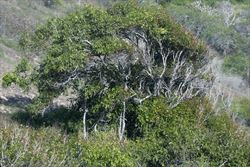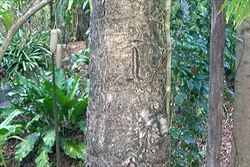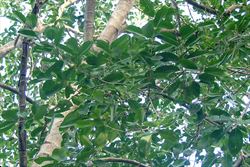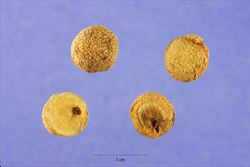Click on images to enlarge

infestation (Photo: Forest and Kim Starr, USGS)

habit (Photo: Forest and Kim Starr, USGS)

bark on main trunk (Photo: Sheldon Navie)

branches (Photo: Forest and Kim Starr, USGS)

leaves (Photo: Sheldon Navie)

flower clusters (Photo: Sheldon Navie)

close-up of mature fruit (Photo: Forest and Kim Starr, USGS)

close-up of seeds (Photo: Steve Hurst at USDA PLANTS Database)
Scientific Name
Syzygium cumini (L.) Skeels
Synonyms
Eugenia cumini (L.) DruceMyrtus cumini L.
Family
Myrtaceae
Common Names
black plum, Damson plum, Duhat plum, jaman, jambolan, jambolan plum, jambul, Java plum, Javan plum, Malabar plum, Portuguese plum
Origin
It is believed to be native to eastern tropical Africa (i.e. Kenya, Tanzania and Uganda), the Indian Sub-continent (i.e. Bhutan, India, Nepal and Sri Lanka), China and south-eastern Asia (i.e. Indonesia and Malaysia). However, the exact native range of this species is obscure.
Naturalised Distribution
Occasionally naturalised in the coastal districts of central and northern Queensland.
Naturalised overseas in tropical and southern Africa, south-eastern USA (i.e. ), tropical South America, the Caribbean, the Mascarenes (i.e. La Réunion), the Seychelles, and on several Pacific Islands (e.g. the Cook Islands, French Polynesia, New Caledonia, the Galapagos Islands and Hawaii).
Notes
Jambolan plum (Syzygium cumini) is regarded as an environmental weed in northern Queensland, and as a potential environmental weed or "sleeper weed" in other parts of northern Australia. It is a serious weed on some Pacific islands, and is listed in the Global Invasive Species Database (GISD).

